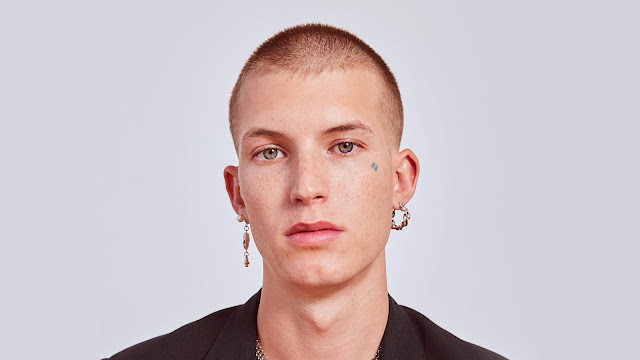Some horror fans weaned on Friday the 13th films in the 1980s have long wished for a straightforward slasher. A horror film absent of creepy kids, nuns, and swirling CGI effects. In a way, Chris Nash’s In A Violent Nature, fits the bill. Craftily shot by cinematographer Pierce Derks, with a lingering, moody style reminiscent of Gus Van Sant’s experimental Gerry, Jeff Liberman’s 1981 Just Before Dawn and the remote, woodsy vibe of the early Friday films, In A Violent Nature is no doubt gorgeous and gory. However, a nagging emptiness lies within. Perhaps that’s the point, but slasher fans may be a bit let down that this isn’t a rewatchable goody.

For much of the film, the camera takes the perspective from behind the back of the killer. It’s an unusual stance that conveys the killer’s point-of-view, without doing it directly. A bulky, mangled, Jason-type, we watch him stalk wordlessly around the woods, slaughtering some locals and a clan of drifty, twentysomething-types out camping. Unlike its 80s influences, the film doesn’t concentrate too much on eclectic characters (none of them really pop, except for one in the movie’s mealy attempt at portraying a politically correct smartphone smarty). The group is revealed through snatches of innocuous conversations, shots of them here and there in the dark in the haze of their pot smoke, and the bleary, bummer music they listen to. The lore of the killer is a bit unmemorable as well, and not really compelling enough to mull over. Without much emphasis on character, the film instead greatly emphasizes the ingenuity, bravura make-up and special effects of its nasty, grim kills (though a well-edited lake sequence is the most eerily effective). Filmed in Canada, the film also feels like anywhere woodsy USA (we hear a faint snippet of a newscast covering Senator Joe Manchin and out-of-work steelworkers). In combining all of the aforementioned elements, including a lack of a musical score to create a distancing, cozy dimension of artifice, overall, there’s almost a sense of depressing nihilism.

After a beautifully shot, almost operatic final girl chase in moonlit woods, with spooky, jittery natural sound effects, the film takes an intriguing, pace-blunting swerve in the last act, that features Lauren-Marie Taylor, an actress from Friday the 13th Part II. Suddenly the movie feels almost Dardenne brothers-esque. It’s kind of a tepid sequence, but there’s something about the ease and world-weariness within the story her character tells, and the casting of someone part of such an impactful cinematic slasher franchise, that feels acutely elegiac. **1/2
-Jeffery Berg




















.jpg)